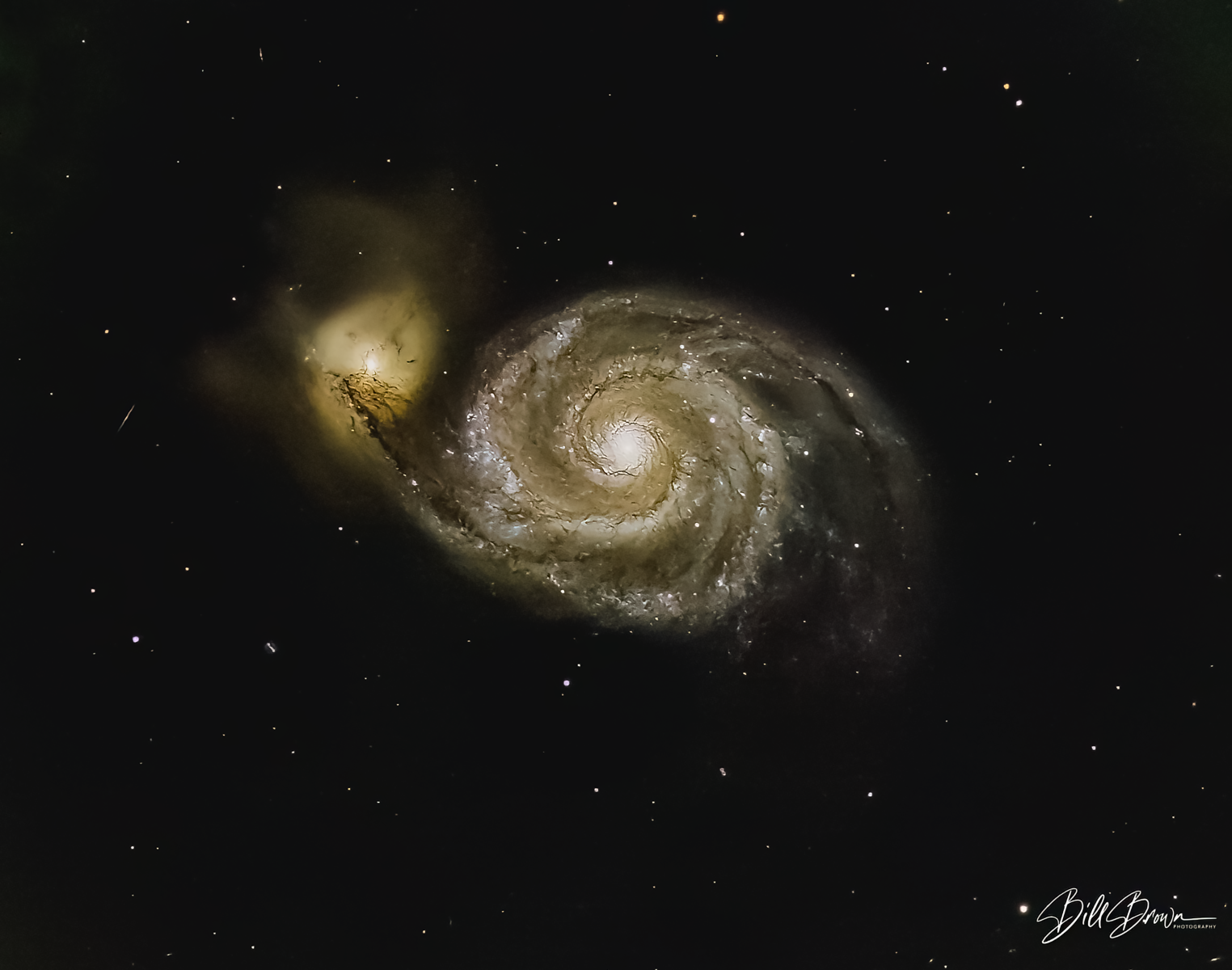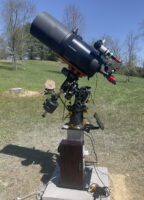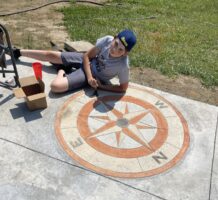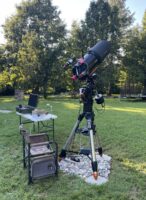I had no plan to shoot a particular target tonight since I had shoulder reconstruction surgery about two weeks ago and I was not able to put a 50lb+ OTA with accessories on a mount that required me to lift that to shoulder height. My neighbor stopped by and loaded the scope into the dovetail while I tightened the dovetail bolts so I jumped on the first thing that came to mind since the skies are clear. I really like M51 for the stunning beauty of two galaxies colliding. It has to be one of the most stunning galaxy targets and was positioned well in the sky.
The Whirlpool Galaxy, also known as Messier 51a (M51a) or NGC 5194, is an interacting grand-design spiral galaxy with a Seyfert 2 active galactic nucleus. It lies in the constellation Canes Venatici, and was the first galaxy to be classified as a spiral galaxy. It is between 23 and 31 million light-years awayand 76,900 ly (23,580 pc) in diameter.
The galaxy and its companion, NGC 5195,are easily observed by amateur astronomers, and the two galaxies may be seen with binoculars. The Whirlpool Galaxy has been extensively observed by professional astronomers, and its pair with NGC 5195 who study it to understand galaxy structure (particularly structure associated with the spiral arms) and galaxy interactions. Its pair with NGC 5194 is among the most famous and relatively close interacting systems, and thus is a favorite subject of galaxy interaction models.
What later became known as the Whirlpool Galaxy was discovered on October 13, 1773, by Charles Messier while hunting for objects that could confuse comet hunters, and was designated in Messier’s catalogue as M51. Its companion galaxy, NGC 5195, was discovered in 1781 by Pierre Méchain, although it was not known whether it was interacting or merely another galaxy passing at a distance. In 1845, William Parsons, 3rd Earl of Rosse, employing a 72-inch (1.8 m) reflecting telescope at Birr Castle, Ireland, found that the Whirlpool possessed a spiral structure, the first “nebula” to be known to have one. These “spiral nebulae” were not recognized as galaxies until Edwin Hubble was able to observe Cepheid variables in some of these spiral nebulae, which provided evidence that they were so far away that they must be entirely separate galaxies.
The advent of radio astronomy and subsequent radio images of M51 unequivocally demonstrated that the Whirlpool and its companion galaxy are indeed interacting. Sometimes the designation M51 is used to refer to the pair of galaxies, in which case the individual galaxies may be referred to as M51a (NGC 5194) and M51b (NGC 5195).



